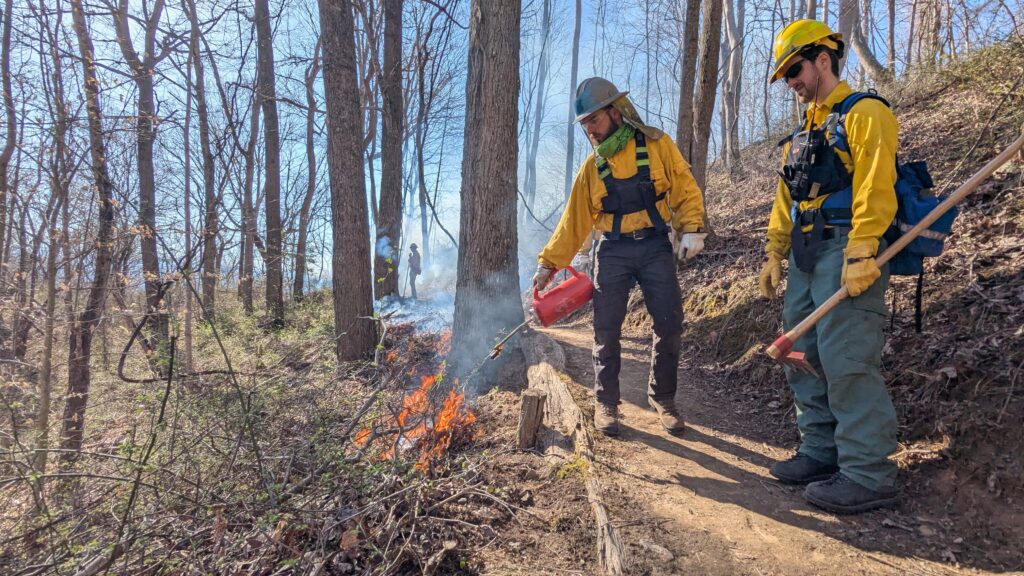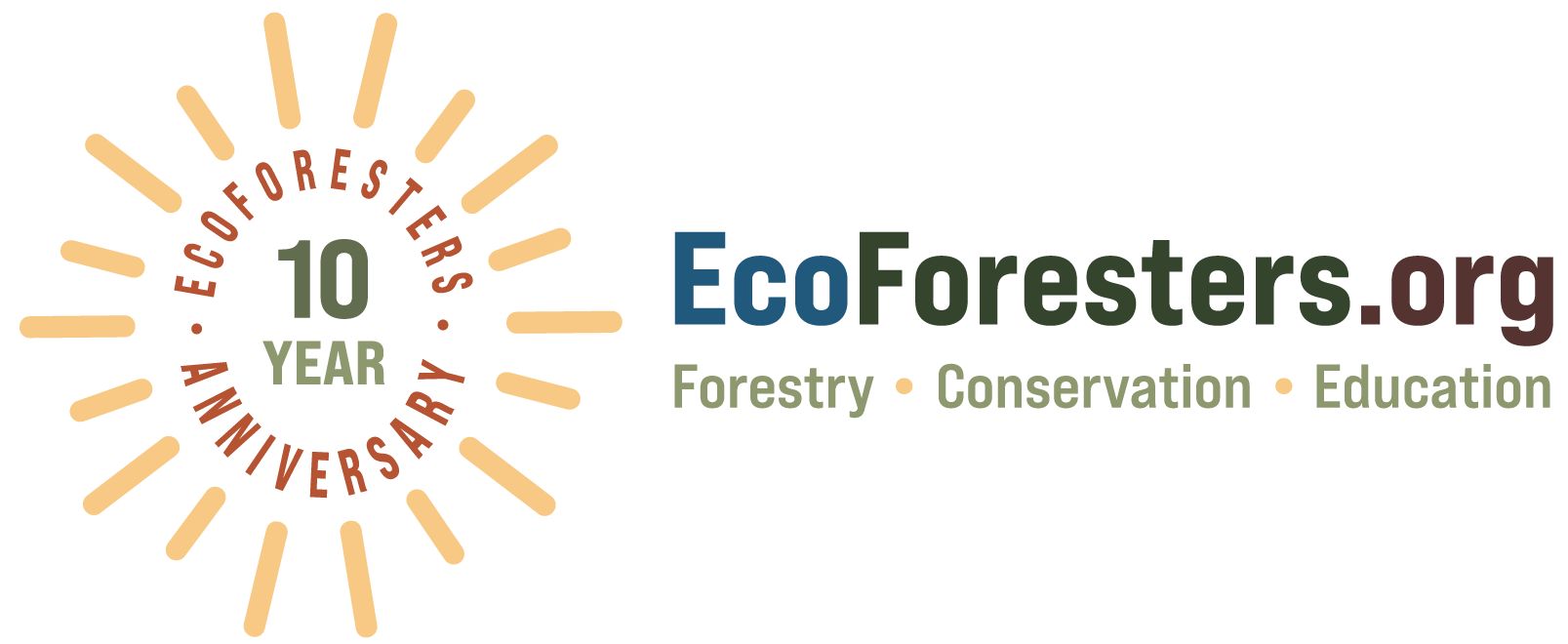The Science of Fuel Loads
If you were around WNC in the fall of 2016, you remember what a significant fire season that was. In the spring of 2025, we are having another significant fire season. This is largely because of the prime weather conditions for fire behavior such as high winds, low relative humidity, air temperature, and low fine fuel moisture. In some part, the amount of woody debris from Hurricane Helene has increased fuel loads across the area. Downed trees and landslides have added to the complexity of wildfire response. In the midst of spring fire season, and without significant research, it’s too early to tell exactly how much the actual ignition of downed trees have played into increased wildfire risk.
For a fire to occur we need 3 things; fuel, heat, and oxygen. Of those 3, landowners and natural resource managers can impact fuels the most. The larger the size of the fuel, the more energy is needed; not only to ignite it, but to cause complete combustion. Sometimes large fuels (such as logs) will ignite and smolder from the outside, but never fully burn all the way down to ash.
The finest fuels are the principal ones to ignite, such as leaves, needles, grass, and even moss are called 1 Hour fuels. They comprise initial fire spread and the heating and combustion of larger fuels. Under dry conditions, these fuels are often flashy and cause surface flames to spread quickly. Small branches and leaves from ¼ to 1 inch in diameter are called 10 Hour fuels. Sizing up to 1-3 inch branches and limbs are 100 Hour fuels. Limbs and trunks 3-8 inches are called 1,000 Hour Fuels, and anything greater than 8 inches is considered a 10,000 Hour fuel. These 10,000 hour fuels typically do not support fire spread but can increase fire duration and severity. If fuel loading is high and distributed across the site (such as from storm damage), high fire severity can be more widespread and can increase both resistance to control and the duration of burning.

The designation of the “hour” of fuels signifies how quickly these fuels react to changes in moisture, with larger fuels taking longer to adjust to changes in atmospheric moisture. Imagine some of the once impressive landscapes, now full of storm damaged and blown down trees. Amongst the pick-up-stick like pile are a jumbled culmination of fuels ranging from 1 to 10,000 hours. Six months after Helene, many downed trees are still losing lots of moisture, so their full fire risk potential may not even be fully met.
There are many ways to reduce potential fire risk: being FireWise, targeted thinnings and forestry mulching to reduce fuels, and using prescribed fire. We’ve all heard the expression, “fight fire with fire”. That’s exactly what our Wildland Firefighters do, when they go into direct suppression. But what if we could use prescribed fire to serve as a multifaceted tool?
Prescribed fire can be a very cost-effective way to reduce forest fuels as well as to meet forest restoration goals and improve overall forest health. One thing to remember is that one burn will actually promote thick growth in the understory, but a series of prescribed burns can help to create ideal forest conditions for sustainable long-term ecosystem health (especially in mixed oak and oak-pine forests).
Since the Fall 2016 wildfires, public interest has spiked regarding prescribed burning. Following this buildup, landowner demand for prescribed burning services has also increased. Nearly all plans for any type of mixed oak or oak-pine forest will recommend the use of prescribed fire. We can only hope that post-Helene, not only the interest, but more importantly, the willingness and demand for landowners to use prescribed burning will increase.
